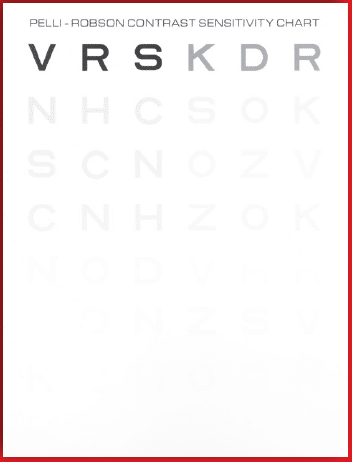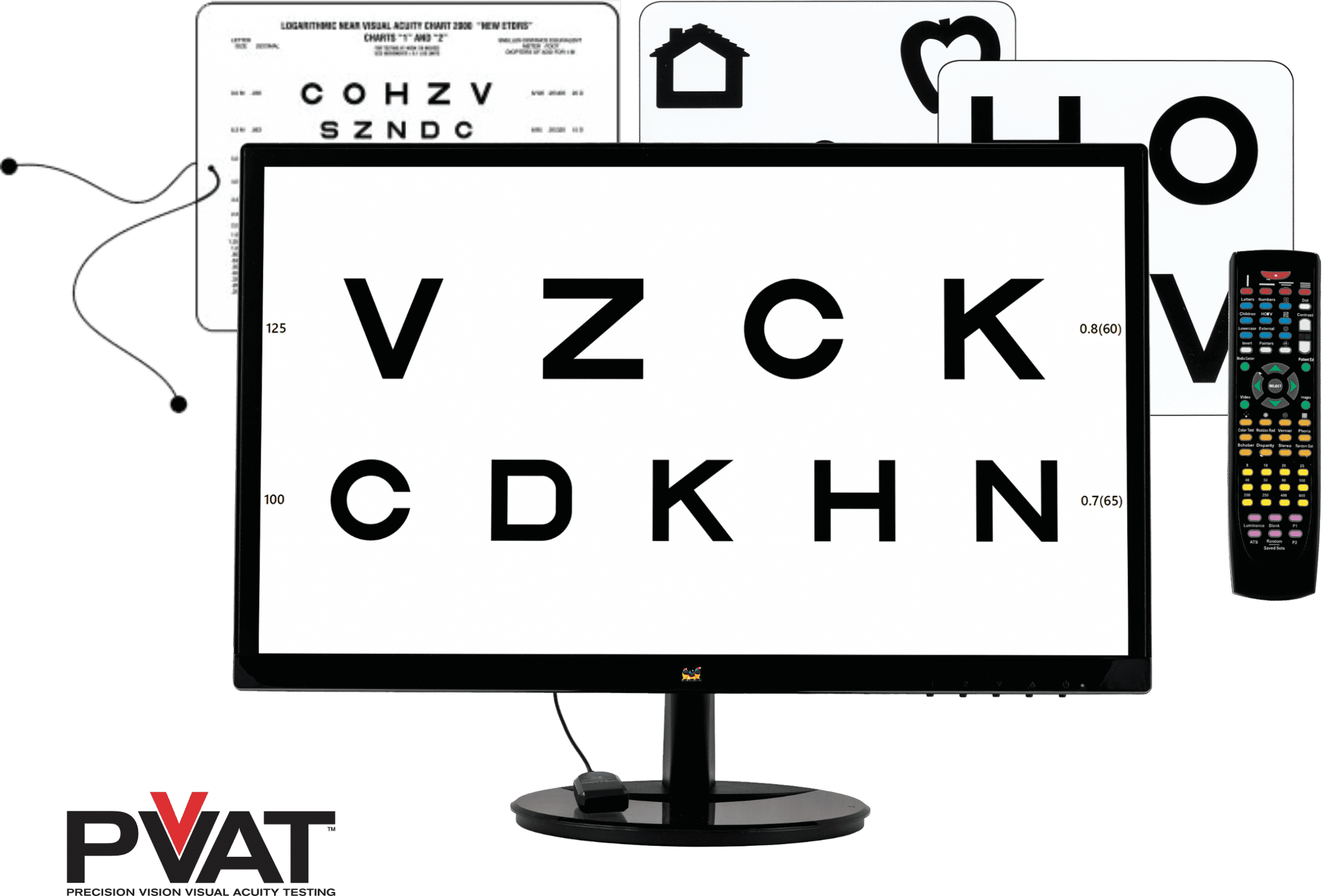
EyeOnVision July, 2022
July Issue, 2022 – Teller Acuity Cards
IN THE NEWS
Preferential looking measures of grating acuity: development and applications
Authors: Olivia Reed, B.S.; D. Luisa Mayer, PhD§; T. Rowan Candy, PhD, FAAO
Institutions:
- Indiana University School of Optometry, Bloomington, IN
§ New England College of Optometry, Harvard Medical School & Children’s Hospital, Boston, MA

This paper presents the challenges faced in the development of the preferential looking grating acuity approach to assessing the vision of young patients. The goal of the paper is to provide the scientific rationale involved in the design of the Teller Acuity Cards and their application using the Acuity Card Procedure, to serve as an educational tool for users. Recent technological advances have also facilitated the development of new methods of visual acuity assessment that apply the principles of preferential looking. Scientists and developers can expect to address these same challenges in developing new methods.
PRODUCT PROFILE
A widely-used strategy for measuring visual acuity in infants, young children and non-verbal adults is called Preferential Looking Testing. This method takes advantage of a patient’s natural preference for looking at a bold pattern rather than a blank, homogeneous area.
Teller Acuity Cards®, a Preferential Looking Test, was developed for use in clinical settings and provides a quantitative assessment of visual acuity for pattern detail that can be helpful in evaluating vision in patients with bilateral and unilateral ocular disorders.
This video will help you better understand how to administer the test.
IN THE KNOW

How do you know if it’s REAL?
The image above is being utilized to market the Teller Acuity Cards® as “digitally printed.”
The “gold standard” Teller Acuity Cards® are manufactured exclusively by Precision Vision, Inc. As the sole manufacturer and master distributor for Teller Acuity Cards®, Precision Vision, Inc. can confidently state that “digitally printed” tests are not accurate and Teller Acuity Cards® (TAC) being solicited in this manner are counterfeit.
The extensive evidence gathered in the development and use of TAC provides a strong foundation for application in ophthalmology, optometry, and developmental practice. Precision Vision, Inc. undertook many years of dedicated work refining the tools and techniques necessary to make this demanding and prestigious test. Precision Vision is continually investigating new methods and materials to produce the quality test in use today.
The Teller Acuity Cards® can only be purchased directly from Precision Vision, or through approved worldwide distribution channels.
ASK PV

Q: When testing with grating acuity, how does the tester judge whether the patient detects a grating?
A: When it is first presented, all patients from babies to adults, make an eye movement to a high contrast pattern like a bold grating on an otherwise blank background. This is a natural and reflexive response to the appearance of the bold pattern. This is the most straightforward response to judge that a grating is detected by a patient.
When the grating becomes finer and harder to see (higher cycles/cm), the patient may take only a brief glance at one side or look from side to side while holding a gaze a little longer on one side. This more subtle cue indicates that the patient sees the grating on this card. Presentations may have to be repeated before the tester can be sure that the patient actually detects the grating.
If a patient can point to the grating as well as provide a verbal cue, one can be much more confident in judging detection. Some patients, may point to the larger gratings and then stop pointing however, continue to show looking behaviors that suggest they detect the grating. We recommend encouraging the patient to guess if they understand this instruction.
For young patients, when testing around the threshold, we recommend occasionally showing a very coarse, low-frequency grating that you are sure the patient sees. This low cycles/cm card helps the young patient maintain interest in the test and allows the tester a reminder of the cues the patient uses when the grating is easily seen.
PEOPLE OF PV
Welcome to the Precision Vision family, take a moment to get to know us!
This month we are featuring Chris, who just celebrated his 25-year anniversary with Precision Vision! Aside from the much-appreciated longevity, Chris has always been a ‘can-do’ member of the PV production team. Here is a little more about Chris that you may not know:
Name: Chris
Department: Production
How long have you been with Precision Vision?: 25 years
What is the most rewarding thing about serving the eye care industry?: I enjoy knowing that my work can make a difference in the vision industry.
Hobby: Radio-controlled electronics with my family.
Birth Month: January
Favorite Movie: What Happened To Monday
Favorite Food: Southern Pecan Pie
Favorite Precision Vision manufactured product?: ETDRS LED Cabinet

What is your favorite Precision Vision core value?: “Good To Great” – The standards I have for myself and Precision Vision has for our products are extremely high.






